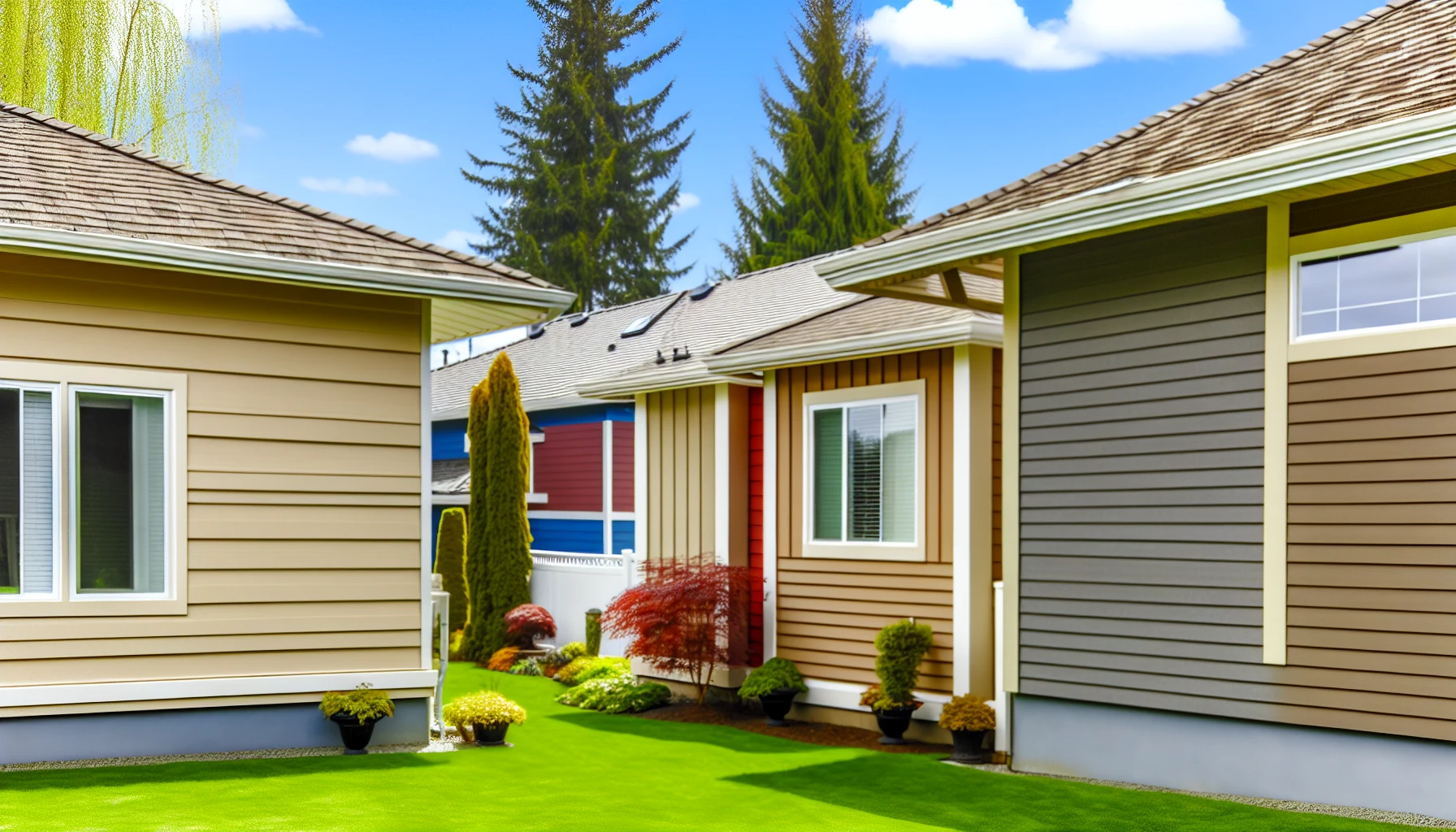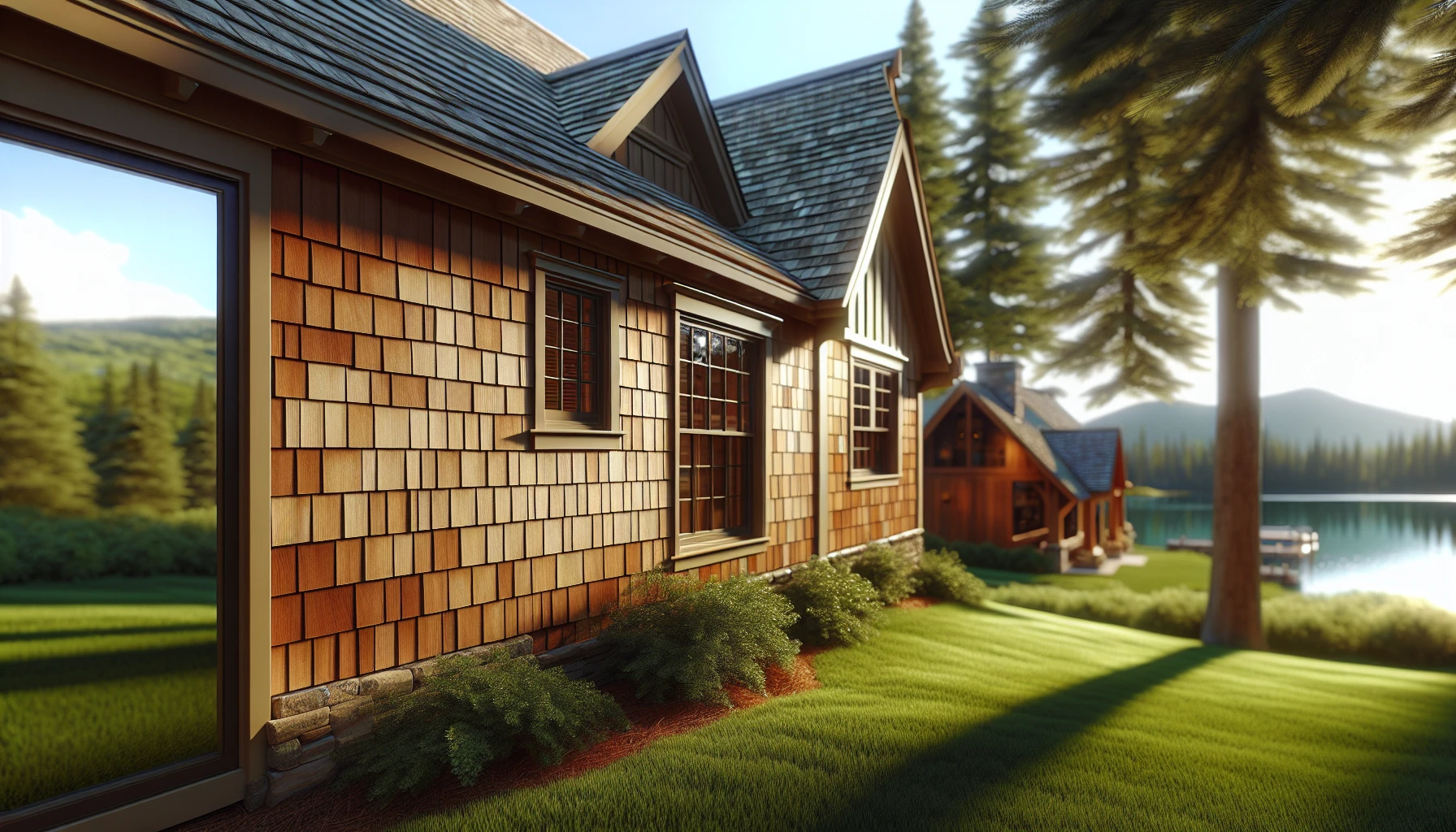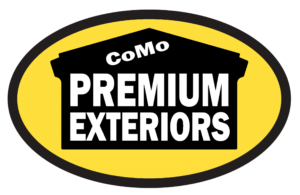Revamping your home’s exterior can be a game-changer when it comes to increasing curb appeal and overall value. Among the numerous options available, one type of vinyl siding stands out as a versatile, low-maintenance, and cost-effective solution. With a myriad of styles, textures, and colors to choose from, this type of vinyl siding can transform your home’s appearance, making it the envy of the neighborhood.
Key Takeaways
- Explore the various types of vinyl siding styles available for homeowners.
- Select from vertical and horizontal options, specialty textures, wood grain and cedar shakes to customize your home’s exterior.
- Vinyl siding is a low maintenance option that increases curb appeal and resale value while providing excellent weather resistance.
Exploring Vinyl Siding Varieties

Various types of vinyl siding styles
Vinyl siding, made of polyvinyl chloride (PVC), has come a long way since its introduction in the 1950s as a replacement for aluminum siding. Its durability, versatility, and cost-effectiveness have made it a popular choice among homeowners, with a broad range of styles to suit various architectural designs. Depending on your taste and preference, you can choose from vertical, horizontal, and specialty vinyl siding styles to create the perfect exterior for your home.
Vertical and horizontal siding styles are the most common and come in various profiles, such as board and batten, barn siding, and cedar shakes. Homeowners can mix and match different wood siding styles to achieve a range of textures and styles, or even reduce expenses.
We will further examine different vinyl siding varieties and their potential effects on your home’s exterior in the subsequent sections.
Vertical Siding Options
Vertical vinyl siding adds a contemporary look and a sense of elongation to your home, and it’s often used to accent specific parts of the house, such as entryways or gables. One popular vertical siding style is board and batten siding, which consists of wide planks up to 12 inches wide, with narrow strips of wood affixed over the interval between the boards. This style creates a distinct shadow line, adding depth and character to your home’s exterior. Among the various vertical vinyl siding styles, board and batten siding remains a top choice for homeowners.
The installation process for vinyl board and batten siding is typically more straightforward than traditional methods, as the battens are integrated into the panel, allowing for just one piece to be installed instead of multiple. Opting for board and batten vinyl siding allows you to create a modern, elongated appearance for your home, coupled with the advantages of easy upkeep and resilience to weather conditions.
Horizontal Siding Choices
Horizontal vinyl siding is a classic favorite, offering timeless appeal and versatility. Some popular horizontal siding styles include:
- Traditional lap siding: provides a polished, pristine aesthetic that complements any exterior color, featuring a slight overlapping lip that adds detail and moderate shadow lines.
- Dutch lap siding: characterized by sharper bevel angles and deeper troughs in the overlapped areas, creating a hand-carved look with enhanced shadows and smoother lines.
- Clapboard siding: features long, narrow boards that overlap horizontally, creating a clean and traditional look.
When considering the different types of vinyl siding, these styles of horizontal vinyl siding allow homeowners to choose the option that best suits their desired aesthetic.
Clapboard siding, also known as lap siding, utilizes long, narrow boards nailed lengthwise to the wall of the house, overlapping one another top to bottom and forming a shadow line that produces an attractive profile. Horizontal vinyl siding is not only versatile in style but also more resistant to splintering, mold, and insects when compared to horizontal wood siding, making it a practical and appealing option for homeowners.
Specialty Vinyl Siding Styles
For those seeking a unique and personalized touch, specialty vinyl siding styles like log cabin, scalloped, and staggered edge shake offer distinctive options to elevate your home’s exterior. Log cabin vinyl siding mimics the appearance of rough logs, providing a rustic look without the high maintenance associated with natural wood. Scalloped siding, available in various shapes such as hexagons and half-rounds, is often used for whole-house applications or as decorative accents on dormers and gables.
Staggered edge shake siding replaces the traditional straight edge shake with staggered bottom edges, giving a more natural look to your home’s exterior. These specialty vinyl siding styles allow you to showcase your unique taste and creativity while enjoying the benefits of low maintenance and weather resistance.
The Aesthetics of Vinyl Siding Textures

Wood grain and cedar shake vinyl siding
The texture of your vinyl siding plays a significant role in the overall appearance of your home. Available textures include:
- Clapboard
- Traditional lap
- Dutch lap
- Smooth
- Wood grain
- Beaded seam
Each texture offers different visual patterns and shadow lines to enhance your home’s exterior. Selecting the right texture can create a unique and personalized look that complements the architecture of your home and adds visual appeal.
To further customize your home’s exterior, you can choose from a variety of colors and finishes. Combining the right textures, colors, and profiles can give you the desired look and feel for your home, whether you want a traditional, rustic, or contemporary appearance. In the following sections, we’ll examine some popular vinyl siding textures and their impact on your home’s aesthetic.
Wood Grain and Cedar Shakes
Wood grain and cedar shake vinyl siding textures mimic the look of real wood, offering a charming and rustic appeal without the maintenance associated with natural wood. Wood grain vinyl siding replicates the appearance of stained wood, while cedar shake styles resemble real cedar shakes, adding depth and character to your home’s exterior.
The texture of wood grain and cedar shakes on vinyl siding is achieved through the manipulation of a highly resilient polymer, which replicates the visual and tactile characteristics of wood grain. With wood grain and cedar shake vinyl siding, you can enjoy the beauty of natural wood without the need for ongoing maintenance, such as painting, staining, or sealing.
Smooth and Beaded Styles
Smooth vinyl siding offers a clean, modern appearance, emulating the look of freshly painted wood without the presence of a shadow line like beaded styles or Dutch lap. This type of siding is available in a range of colors, including:
- white
- beige
- gray
- blue
- green
- brown
It is also available in a variety of finishes like matte, satin, or gloss. Smooth vinyl siding is an excellent choice for homeowners seeking a low-maintenance and contemporary exterior.
Beaded styles, on the other hand, add a luxurious and decorative touch to your home’s exterior. Beaded seam siding is characterized by a rounded notch cut into the bottom edge of each plank, creating an aesthetically pleasing shadow line. Beaded siding adds depth and detail to your home’s exterior, making it a popular choice for those looking to create a distinctive and elegant appearance.
Advantages of Insulated Vinyl Siding
Insulated vinyl siding offers several benefits that can enhance your home’s comfort and efficiency. With an R-value ranging from 3.5 to 6, insulated vinyl siding provides increased energy efficiency by minimizing gaps and decreasing energy leaks. This results in decreased energy costs and augmented comfort throughout the year.
Besides energy efficiency, insulated vinyl siding aids in soundproofing your home. The panel insulation helps to mitigate sound waves, decreasing external noises by as much as 39%. This added layer of protection not only keeps your home comfortable but also provides a quieter living environment, making insulated vinyl siding a worthwhile investment for many homeowners.
Durability and Weather Resistance of Vinyl Siding
Vinyl siding is engineered to withstand harsh weather conditions, including strong winds, heavy rain, and even hail. Its composition of PVC resin, acrylics, and other additives enhances its durability, promising a long-lasting and low-upkeep exterior for your home. When installed correctly with high-quality materials, vinyl siding can even withstand storms and hurricanes.
Compared to other siding materials like wood, fiber cement, brick, stone, stucco, and metal, vinyl siding offers several advantages. Some of these advantages include:
- Low-maintenance requirements
- Affordability
- Resistance to splintering, mold, and insects
- Practical and appealing option for homeowners
Furthermore, features like a double-layer mounting hem provide increased stability and security in high winds, ensuring a secure and durable installation.
Achieving Desired Looks with Vinyl Siding Colors and Profiles
Creating the perfect aesthetic for your home involves selecting the right combination of colors, profiles, and siding styles. Consider factors such as your desired aesthetic, your home’s architecture, the colors of the roof and trim, and your region’s climate when selecting vinyl siding colors. Neutral shades, such as light neutrals, blues, grays, light browns, and white, are generally thought to have higher resale value and attract a wide range of buyers.
In addition to color, the profile of your vinyl siding plays a significant role in the overall appearance of your home. Profiles such as:
- Clapboard
- Traditional lap
- Dutch lap
- Smooth
- Wood grain
- Beaded seam
offer different textures, patterns, and shadow lines to enhance your home’s exterior.
By carefully selecting the right combination of colors, profiles, and siding styles, you can create a unique and personalized look that enhances your home’s curb appeal and increases its resale value.
Installation Insights: Vinyl Siding Types and Techniques
The installation process for vinyl siding varies depending on the type and style chosen. Regardless of the type of siding, correct installation is key to ensure a secure and durable outcome. Here are the steps to follow:
- Utilize corrosion-resistant nails, staples, or screws to affix the vinyl siding to the wall.
- Install sill trim at the soffits and crimp the siding to ensure it is in place.
- Secure the panels with nails every 16 inches to guarantee a secure and durable installation.
Preventing common installation errors is key for the long-term performance and durability of your vinyl siding. Here are some things to watch out for:
- Installing panels too snugly
- Inadequate alignment of siding panels
- Nailing the siding on too tightly
- Leaving too much space between fasteners
- Using low-quality or inexpensive siding products
By following the proper vinyl siding installation techniques and using high-quality materials, you can ensure a secure and long-lasting vinyl siding exterior for your home.
Comparing Vinyl to Other Siding Materials
When pondering siding options for your home, you need to evaluate the advantages and disadvantages of vinyl siding in comparison to other materials like:
- Wood
- Fiber cement
- Brick
- Stone
- Stucco
- Metal
While vinyl siding offers numerous advantages, such as low maintenance, affordability, and resistance to splintering, mold, and insects, other materials may provide a distinct aesthetic appeal or additional benefits.
For instance, some common types of siding materials include:
- Wood siding: requires frequent painting or staining but offers a natural, rustic appearance
- Fiber cement siding: low-maintenance but may require periodic caulking and painting over time
- Brick and stone: more expensive options but provide increased durability and a unique aesthetic
Ultimately, the choice of siding material depends on your personal preferences, budget, and desired level of maintenance.
Maximizing Home Value with Vinyl Siding Selection
Selecting the right type of vinyl siding can have a significant impact on your home’s curb appeal and resale value. Studies have shown that homeowners can regain a substantial part of their investment when they choose vinyl siding, with a typical home value increase ranging from 63% to 82% of the project’s cost. High-quality vinyl siding replacements have been observed to increase home value by an average of $18,366.
In addition to increasing your home’s resale value, vinyl siding offers long-term financial advantages, such as reduced maintenance costs, affordability, and potential energy savings. By choosing the right vinyl siding style, texture, and color for your home, you can enhance your home’s exterior, improve its marketability, and enjoy the benefits of a low-maintenance and energy-efficient siding solution.
Summary
In conclusion, vinyl siding offers a versatile, low-maintenance, and cost-effective solution for homeowners looking to revamp their home’s exterior. With a wide range of styles, textures, and colors to choose from, you can create a unique and personalized look that enhances your home’s curb appeal and increases its resale value. By selecting the right combination of vinyl siding styles, taking the time to ensure proper installation, and comparing the advantages and disadvantages of other siding materials, you can make an informed decision for your home and enjoy the long-term benefits of a beautiful and durable exterior.
Frequently Asked Questions
Is there different types of vinyl siding?
Yes, there are different types of vinyl siding available such as clapboard, Dutch lap siding, beaded siding and ship-lap siding, each offering a unique texture, grain and finish.
What is the cheapest type of vinyl siding?
Builder’s grade vinyl siding is the most cost-effective option, available for around $1.60 per square foot. It offers less insulation and durability than other grades, however.
What is the difference between smooth and textured vinyl siding?
Textured vinyl siding provides a more authentic and organic aesthetic, whereas smooth siding offers a sleek and modern look.
What are the main types of vinyl siding?
The main types of vinyl siding include vertical, horizontal, board and batten, traditional lap, Dutch lap, and cedar shakes.
How can I ensure a secure and long-lasting vinyl siding installation?
To ensure a secure and long-lasting installation, use corrosion-resistant nails, staples, or screws, install sill trim at the soffits, crimp the siding to ensure it is in place, and secure the panels with nails every 16 inches.

